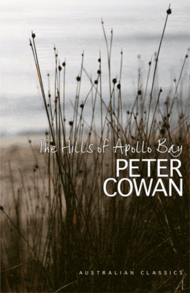INTERVIEW: Bruce Bennett discusses novelist Peter Cowan

How long did you know Peter? What was he like to work with as a colleague?
I knew Peter from 1968, when I returned to Perth from Oxford, until his death in 2002. I enjoyed many things about Peter, especially his wide reading and his quiet, ironic sense of humour.
In editing Westerly together, we would often sit around with a cup of tea or a beer and crisps on the back verandah of the house he built after the war at 149 Alfred Road, Mt Claremont (opposite a bird-filled swamp that became a golf course).
He was an avid book collector and his living room walls were covered by ceiling-high bookshelves filled with colonial Australian fiction and history and some of his favourite American authors. A keen bird-watcher and conservationist, his books and journals reflected this.
In the early years, Edith, Peter’s wife, would be present. Occasionally, his son Julian, a sports photographer with the Sunday Times, would call around. Sometimes I would find Peter in overalls under his Toyota ‘tank,’ fixing some mechanical problem in preparation for one of his periodic forays into the eastern interior or up north. He found these deserted landscapes ‘quite pitiless but utterly attractive.’ Silence never worried him and he was attracted to the vast, open spaces.
He photographed relics of human habitation on these treks (mineshafts, broken bottles, ruined dwellings) and developed them in black and white in his darkroom off the back verandah. We published some of these photos in Westerly.
I was struck by Peter’s feeling for shadows, both in his photography and his fiction. He used to brood over his drafts – writing and rewriting until he got the words and their rhythms and structures right. I suspect he thought that the most important human dramas are played out in the shadows, and that our need to negotiate these shadows makes us human.
Why is it so important to keep novels by Peter Cowan in print?
The Hills of Apollo Bay is the major novel of Peter Cowan’s maturity. It leads the way in revealing just how fine a writer he is. But he is also a world-class short story writer and there were three other novels before The Hills of Apollo Bay – Summer (1964), Seed (1966) and The Color of the Sky (1986). I would love to see a new selection of his short fiction and reprints of his early novels.
What has he contributed to Australian writing?
Peter Cowan’s historical and geographical knowledge of his home state of Western Australia is evident throughout his work and gives him a unique place in our literary heritage. His values are important too. He was a conservationist before this became respectable and these values inform his writings. As a literary stylist, he represents the forces of stylistic experiment and modernity emerging from the Depression and World War Two. The 1930s and 1940s were Peter Cowan’s ‘seed-time’ as a writer, as we see in The Hills of Apollo Bay. But he remained open to artistic experiment and change in his own work and contributed to the development of younger writers through his co-editorship of Westerly from the 1960s to the 1990s.
What do you believe is his finest achievement?
The Hills of Apollo Bay is Peter’s most ambitious and resonant novel. He was a private person and was critical of confessional writers who ‘let it all hang out.’ Yet in his seventies he wrote this most autobiographical of his novels. He incorporates fragments of his experience in wartime Melbourne, and in the Western Australian wheatbelt, and Perth and its suburbs. It contains his observation of changing times and shifts in attitudes and values across the generations.
The novel’s brilliance lies in its rendering of fallible human memory – what we remember and choose to forget. It is a novel of ideas – of how modern Australian culture was born in the war years and has struggled to regain that sense of urgency and immediacy.
These things are bound up with emotions and relationships. The Hills of Apollo Bay is a powerful love story told not through melodrama but through moments of recollection – and the pathos of irrecoverable moments. The novel leaves us wondering at the mysteries of flesh and spirit, of ageing, and what we can retrieve through words.
What will the reader get out of his work?
Attentive readers will enjoy Peter’s style – he doesn’t use long words or sentences but his apparently simple syntax and vocabulary are packed with implication, suggestion, subtlety. If we read this writer’s work closely, and attend to its rhythms and implications, we come to recognise a mystery behind appearances.
We all wear masks. Peter’s technique is not to strip them away, as in melodrama, but to show their necessity and the vulnerability of those who wear them. The naked person, at a pristine beach or in an act of love, shows another way which has been almost lost in the complications of modern living.
Tell us your fondest (or most annoying) memory of Peter.
He never annoyed me. I found his gloomy predictions of environmental destruction in Australia’s south-west only too plausible. He was pleased later when other prominent writers took up their cudgels on environmental issues.
Peter was a strong supporter of my attempts, with other colleagues, to introduce Australian literature courses at the University of Western Australia. He became impatient however at political machinations and bureaucratic delays. At one English Department meeting which had become embroiled in what he saw as irrelevant chatter, he threw up the window beside him, stuck his head outside and sucked in the fresh air. No words. As always, he made his point graphically, with a minimum of fuss.


